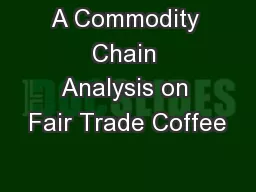PPT-Fair Prices
Author : pamella-moone | Published Date : 2017-07-27
Adverse Selection Moral Hazard Contract Design Costly State Verification Jeffrey H Nilsen httpvideoftcom4051985681001Impactofnegativeyieldseditorschoice Share
Presentation Embed Code
Download Presentation
Download Presentation The PPT/PDF document "Fair Prices" is the property of its rightful owner. Permission is granted to download and print the materials on this website for personal, non-commercial use only, and to display it on your personal computer provided you do not modify the materials and that you retain all copyright notices contained in the materials. By downloading content from our website, you accept the terms of this agreement.
Fair Prices: Transcript
Download Rules Of Document
"Fair Prices"The content belongs to its owner. You may download and print it for personal use, without modification, and keep all copyright notices. By downloading, you agree to these terms.
Related Documents














